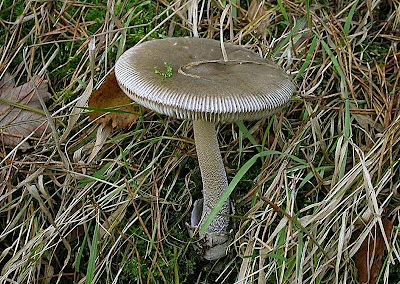We had a rainy walk in the top end of the Crags on Sunday 27th October.. Some fascinating finds, though, including this striking beetle, Nicrophorus investigator, which was burrowing among rotten fungi at the base of a tree.
This moss hangs from branches creating a jungle effect. Possibly Hypnum mammilatum.
This erect moss has amazing twiggy branches. "Twangy" moss we called it. There was just this patch.
This beautiful lichen had come down from high in a Sycamore on a dead branch.It had a silvery reverse side.
We saw 2 dead rabbits (1 partly eaten by a raptor), and a dead bank vole very near this feeding site.
One lively Dipper Cinclus cinclus on the river.
Lots of very nice fungi, though mostly spoiled by the rain. See Mycology blog. (Link to the left.)


+copy.jpg)
.jpg)




